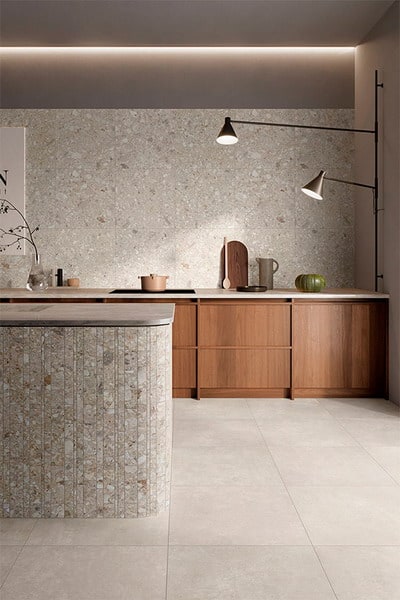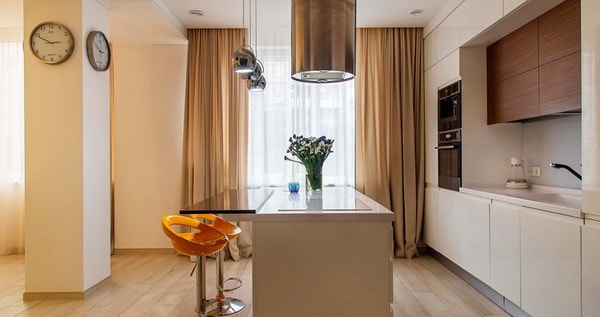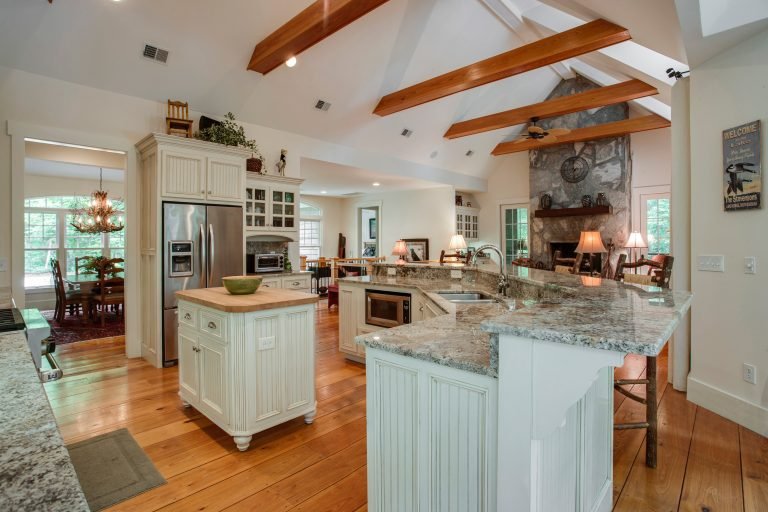How to choose tiles for the kitchen
Ceramic tiles for the kitchen – a popular material used to decorate the kitchen space. Products differ in high esthetic indicators and simplicity in leaving. But when you need to choose which solution to use in the interior, some difficulties arise. In addition to its visual appeal, performance is also required.
The choice of material for the apron
As a rule, wall tiles are suitable for creating a kitchen apron located above the work area. When buying tiles for this purpose, you should follow simple rules:
- Glossy coating is an ideal product if you want to visually expand the space. In addition, it is easily cleaned.
- Lack of relief. The kitchen is the place where often all surfaces are contaminated. Therefore, it is recommended to use a smooth tile, which is not difficult to quickly clean.
- White is what an apron needs. To revitalize the interior, you can do mosaic styling, but in general, design in bright colors is always a winning option.
- If you don’t want to mess around a lot, purchase items in beige or light brown. They will help to hide pollution and dried drops of water.
Key purchase criteria
When choosing building materials for a kitchen apron, check for a protective coating. It is responsible for the resistance of tiles to the effects of active chemicals. Cleaning will also be faster: using special products you can effectively remove dirt and grease. You can find such products by marks A or AA.
If you buy in an ordinary store, be sure to compare the goods from all the packages. One and the same collection model, but from different parties, may differ in shades. Such a moment is considered permissible, since during firing, the color may turn out to be slightly lighter or darker.
Tip: take a sample from each package, place them side by side and determine if there are differences in color.
An important parameter is the caliber. This indicator indicates how much the actual size of the elements may not correspond to the declared. Best if caliber is 0 or at least not more than 1.
Carefully check the purchased goods: the applied glaze should be smooth and even, and the materials themselves – without chips, cracks, scuffs. Before ordering, calculate the amount of required products. Add to this number another 5-10%, if you plan the traditional way of styling, and at least 15%, if you want complex patterns.
How to lay an apron: common methods
- Products 10 to 10. This model is considered the most popular among consumers. It has an advantage over large format – it requires much less pruning, which reduces consumption. For a small room, this solution will be optimal, since it is able to visually expand the space and not overload it. Another plus is a comfortable lining even in the most inaccessible places.
- Ceramic tiles under the brick. Often this option is called a “wild boar” (due to beveled chamfers at the edges). The shape of the elements is similar to small bricks. Such tiles can decorate the kitchen in a modern and classic design.
- Mosaic. It is considered more expensive to implement than previous methods. However, the result will undoubtedly please you. The surface of the building material imitates a real mosaic, thus decorating the finish. Maintenance will be somewhat difficult, but with regular cleaning you can achieve perfect cleanliness.
Options when choosing floor tiles
Floor tiles for the kitchen are selected taking into account a number of characteristics prescribed on the packaging in the form of pictograms:
- Wear resistance class. This parameter is especially important, since the kitchen has a high cross. Poor tile quickly erased. It is recommended to stay at 3-5 class according to the international PEI scale or 5 class according to GOST. What will it give? Slow wear of products, resistance to point impacts, increased operational life.
- Resistance to chemical aggressive environments. To make the product look good after applying household chemicals, choose a tile of class A, AA.
- Slip resistance – coefficient of friction 0.75.
- Low porosity of the tile. The glazed surface protects against moisture absorption.
- Immunity to burnout. Make sure that the packaging shows the sun. This indicator indicates that the material will not fade with time from ultraviolet rays. The characteristic is very important if the kitchen is located on the sunny side.
All these tips will help you make the right choice and be satisfied with the result!







